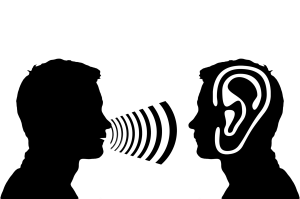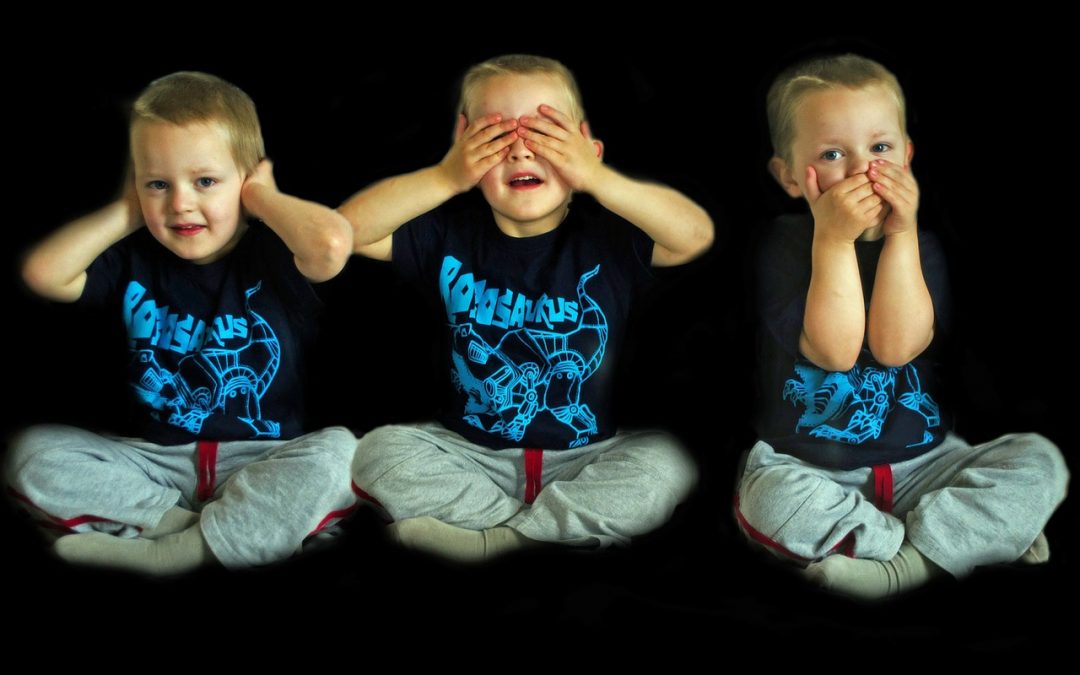I am writing this blog post because there is almost always a sound processing deficit or disorder underlying poor reading and inaccurate spelling.
This skill often goes unassessed. !! Often when it is assessed, it is done incorrectly or incompletely.
As any linguistics or Speech-Language Pathology student will tell you, being able to assess a child’s speech requires specialized “ear training”. It takes real skill and practise to be able to “hear” or perceive the difference between similar-sounding phonemes or “sounds”. When assessing a child’s sound processing skills, you want somebody who is trained in phonology and phonetics to complete the evaluation.
Why? I have seen MANY reports where sound processing skills are reported as average or mild; however, when I recognize sound-based performance deficits and re-assess, I find scores in the severe range.
I have also (less frequently) seen reports of children with severe impairments, and when that diagnosis does not match the performance I see and I re-assess, I find a mild disability instead.
Sound processing assessments cannot be done by just anyone! And you really do need a quiet, distraction-free environment as well.
It is also important to complete a thorough evaluation of phonological skills to comprehensively understand sound processing.
Often there can be an impairment in just one or two areas of sound processing, but it will STILL impact performance in reading, spelling, speaking, vocabulary growth, etc. Often this small underlying impairment gets missed!!
So, let’s have a look and see what a comprehensive assessment contains.

Comprehensive Assessment
It is important to look at phonological awareness abilities, but we must not neglect the phonological memory and rapid naming systems as well. We also want to look across linguistic levels, so it is important to evaluate syllable-level processing as well as sound-level processing. Multiple syllable shapes – shorter, longer, more complex (e.g., with consonant clusters) is also important.
Top-Down vs. Bottom-Up
When assessing phonological awareness abilities, we need to include bottom up (blending) and top-down (segmenting) tasks. These skills reflect different processing and provide some insight to the neural connections across pathways in the brain – how efficiently information transmits from one area of the brain to another (e.g., when given the sounds “d-o-g”, can your brain activate the language concept of “dog”, reflecting transmission of information from the sound processing area of the brain to the language meaning processing area of the brain). I think I will write another blog post about this.
One important note – pay careful attention to the short vowel sounds in these tasks. If there is a vowel deviation or vowel change, mark it WRONG. Almost all of the students that come to me FAIL in short vowel discrimination tasks. The short vowel sounds are very similar and require ear training to accurately identify, so really attend to these during assessment!!
With blending tasks, listen to the inflection/intonation of how they provide their final answer. Did they activate a WORD when they blended, or just stick the sounds together? Sometimes I will ask them to define the word they blended, or to use it in a sentence to see if they actually were able to activate word meaning.
Non-Words
It is also important to assess using real words as well as non-words. Some students score in the average range when using real words, but then score below average when non-word test items are used. The student will have no memory or experience of non-words – they are meaningless, which negates any “help” from the language meaning system, and they are new or novel, which means there is no visual memory of the word and therefore no help from the visual system. As there is no memory or experience with the non-word, this “isolates” the sound processing system. Non-words provide a more accurate measure of the true nature of sound processing skills.
However, using real words provides some indication of how information is being transmitted between processing areas of the brain (as in the “dog” example above) and so are still valuable. Real-word tasks also reflect the child’s performance when engaging in oral and literacy tasks – which areas of strength are they compensating with, and what area of challenge are they compensating for?
Phonological Memory
It is also important to assess phonological memory to gain a measure of the phonological loop and the capacity and accuracy of the system to accurately repeat auditory language stimulus. Again, real and non-words provide a more comprehensive measure of this system.
The phonological memory or “sound memory” system is indispensable. Accurately hearing and perceiving (and remembering) plays a significant role in vocabulary growth, language development, and comprehension.
Children with intact phonological memory develop language faster. Think of it this way: Sound begins as a vibration; as mechanical energy. It travels as a waveform through air particles. One particle is “pushed” and “bumps” against the other, and the energy is transmitted to that particle, then the next, then the next. Eventually it arrives at the ear and travels into the ear canal, reaching the eardrum. The mechanical energy of the vibrations is passed to the sensory hair cells of the inner ear. Hair cells change the vibrations into electrical signals that are passed into the brain through the auditory nerve. From there, information is passed from neuron to neuron through neurotransmitters – a chemical signal. At this point, the sound is heard, perceived, and associated – and a baby is ready to respond. Usually, what babies will do first is imitate or mimic.
This is the crazy, unbelievable task of the baby’s brain – how does a baby use its mouth to reproduce the exact mechanical energy to have that sound or word repeated? This is an amazing process! A mechanical signal traveled through the air, was converted to an electric signal and then a chemical one. Now, the baby will create a chemical signal that convert to an electric signal and pass through the sound processing and motor planning areas of the brain, down to the muscles of the mouth, lungs, larynx, pharynx etc., and create a series of vibrations that will transmit as mechanical energy to our ears.
How does a child do that???? How does the brain take a mechanical energy source and convert it to a chemical signal, and then re-code its own mechanical message? How does the brain figure out the tiny coordinated movements and timing of movements to create each individual sound? It’s complex, but make no mistake – the sound processing AND sound memory systems are CRUCIAL to allow this to happen.
You can easily see why a child with an under-developed or disorganized sound processing system would be a late talker!! (You may also see how hearing loss contributes to language development delay).
You may also be gaining insight as to what is underlying a child’s speech delay – often the breakdown in clear speech is in the BRAIN, not the mouth (and it can be BOTH as they play together).
Phonological memory is important to comprehension too, even in adults. Recent research is indicating that when we listen to someone talk, we actually “unpack” what they say in the sound processing area – right down to the individual sounds. Then, we “re-package” what they said PRIOR to extracting the meaning! This is why we rarely seem to hear each other EXACTLY the way we speak!
Difficulty with sound memory often leads to “getting the gist” or getting the “big picture” but being fuzzy on the details. We often see this in students who understand generalities of a story but cannot answer questions regarding specific details. We also see children than can easily follow shorter directions but get tripped up with 3 & 4-step instructions.
Phonological memory is important for vocabulary growth. Those with impairments will need more exposures and repetitions to acquire new vocabulary – ESPECIALLY for multisyllabic words or linguistically-complex words.
A note on probing phonological memory with nonsense words – when you think about it, every new vocabulary word a child learns IS at first a non-sense word!! They have no experience or memory of it the first time they encounter it. So, it only makes sense to see how a child manages and processes a non-sense word – this will give you a sense of how accurately they are perceiving new words when they encounter them!!
Performance-based tasks
Lastly, it is important to assess how phonological processing skills are used and applied during literacy tasks – reading, writing, and spelling (if the student is old enough to engage in these tasks). Many children will score in the average range on discrete phonological skills such as blending sounds into words, but then do not apply those skills accurately or successfully when reading (e.g., may accurately sound out each letter in a word, but then blend them together and arrive at the wrong word).
I caution against using test scores alone to report on phonological processing skills without also examining phonological awareness application in literacy tasks. I have seen this many times – the phonological awareness skills are reported as “average”, and the underlying deficit is then missed or unidentified.
In spelling samples, look for places where sounds are not represented or sounds that are not there ARE represented. Typically, phonological deficits when spelling results in too few or less commonly, too many letters.
When reading, ensure that the sounds a child is identifying when sounding out match the sounds that a letter (or group of letters) can make. Often, children look at the first letter and guess the word, or guess a word that fits the meaning/context of the sentence but does not match the word at all. This is a sign of phonological processing neglect.
The word a child reads should match the sounds represented by letters. When it doesn’t, this is a sign of poor neural connection in the visual-verbal pathway; and it is an indicator of an under-used or disordered sound processing system.
Note that in reading errors like this, you need to cue around SOUNDS and have the child look at specific letters within the word. This is NOT a time for whole language instruction or MSV cueing, which encourages “guessing” and using context to figure out the word. With these types of errors, you must teach DECODING. When there is a phonological-based error, you must respond with phonological-based cueing and instruction.
In sum:
If your child or student demonstrates weak reading or inaccurate spelling, I strongly recommend a comprehensive assessment of the phonological system.
I strongly recommend assessment is completed by a qualified professional with a background in phonetics and phonology.
An under-developed or disorganized sound system can impact language development, vocabulary growth, grammar acquisition, comprehension, reading, spelling, and speech. It can also impact meta-cognition and meta-linguistic applications and performance skills.
These impairments can be specific to certain words, certain linguistic environments, certain letter patterns, etc. In other words, they can be difficult to detect. Often a child will have “average” performance across most skills and just has a “few words they say funny” or can’t learn to spell. This is a sign of underlying impairment.
If you have any concerns, I recommend assessment!

